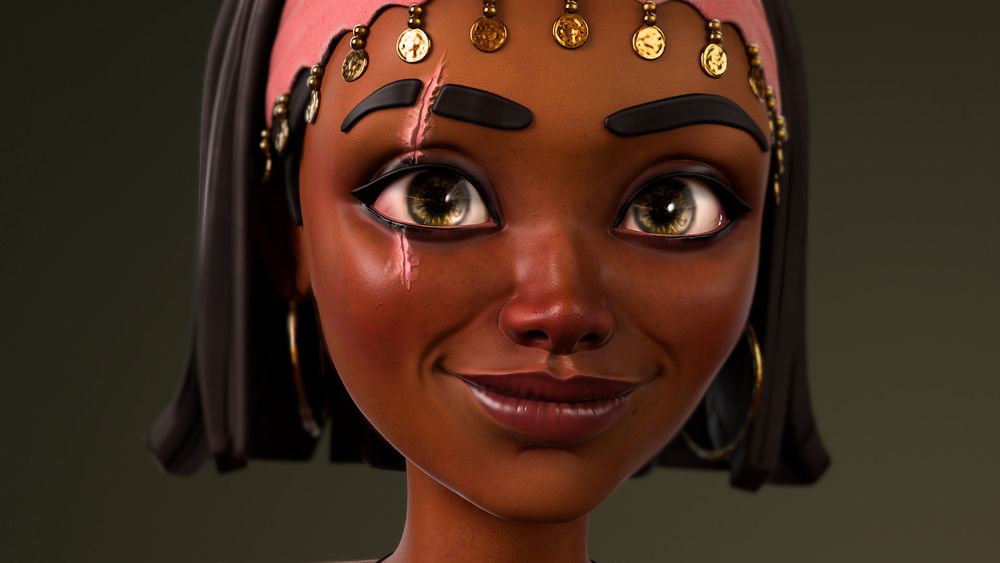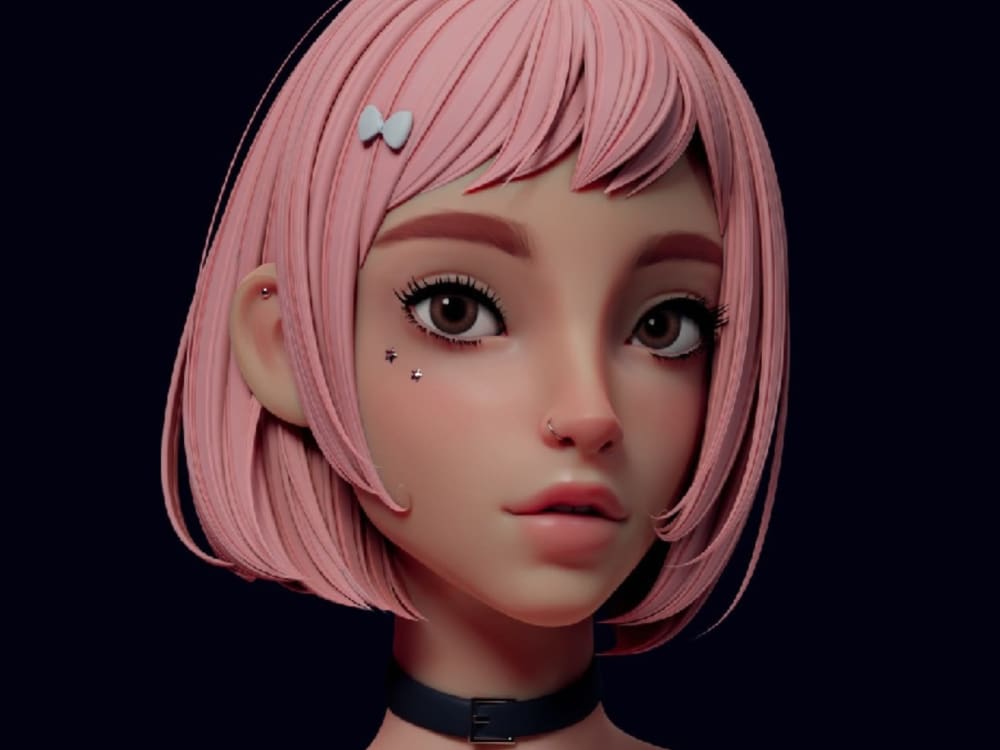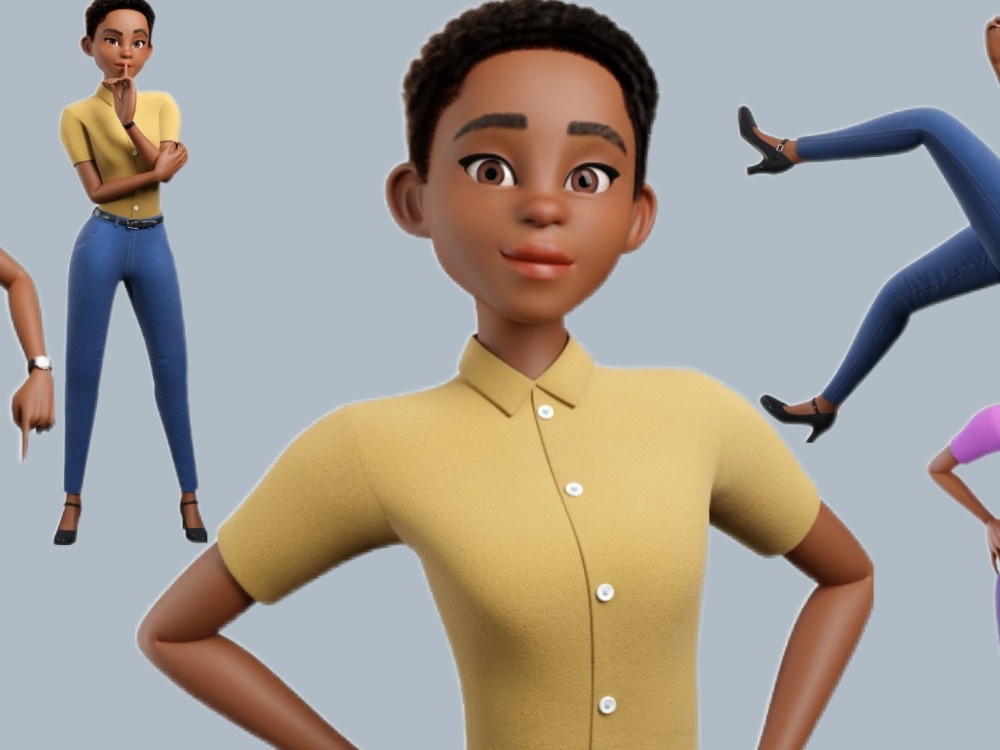
In this comprehensive analysis, we delve into the pivotal evolution of 3D character design. From the early 2D sketches to the intricate 3D technologies of today, each transformational stage will be examined.
We will explore the profound influence of CGI, the advancements in hardware, and the new horizons opened by virtual and augmented reality, all while highlighting the impact on the gaming and film industries.
This retrospective seeks to understand past breakthroughs and anticipate future innovations in 3D design.
The Early Days of 2D Character Design
The advent of 2D character design marked a significant milestone in the evolution of animation, laying the groundwork for the complex, three-dimensional characters we see in today's digital media.
This era of animation was marked by iconic 2D designs that brought characters to life through simplistic, yet expressive lines and shapes. The 2D platform offered a unique canvas for artists to depict character emotions, making them relatable and engaging to audiences.
The technological constraints of the time fostered creativity and innovation, leading to diverse and memorable characters. The advancements in 2D character design set the stage for the subsequent leap into 3D character design, driving the animation industry forward and paving the way for the emergence of modern CGI technologies.
Transitioning From 2D to 3D: an Era of Change
Transitioning from 2D to 3D character design marked an era of substantial change in the digital art landscape. This shift not only presented significant challenges in conceptualization and execution but also influenced the artistic output in profound ways.

In the following discussion, we will explore these challenges and assess the impact of 3D technologies on the art of character design.
Challenges in Transition
In the realm of character design, moving from traditional 2D to more complex 3D technologies presented a myriad of challenges that significantly transformed the industry landscape. The transition sparked debates on '3D Design Ethics, Realism versus Stylization'.
Technical Constraints: Designers grappled with hardware limitations and the steep learning curve of new software.
3D Design Ethics: The realistic portrayal of characters raised ethical and societal considerations, influencing how characters were designed and perceived.
Realism vs. Stylization: Striking a balance between creating realistic representations and maintaining a stylized aesthetic became a complex task.
Increased Production Time and Costs: The detailed nature of 3D design led to increased production time and costs, forcing a shift in industry standards and practices.
These challenges fuelled innovation, pushing the industry towards uncharted territories.

3D's Impact on Art
With the advent of 3D technology, the world of art underwent a seismic shift, marking an era of profound change and innovation. Traditional art forms were recast through the lens of digital sculpting, providing artists with a dynamic and immersive platform to express creativity.
The three-dimensional perspective offered by this technology added depth and realism to art, significantly enhancing visual storytelling. This evolution was further propelled by virtual reality artistry, which opened up unparalleled vistas of interactive and experiential art.
The transition from 2D to 3D pushed the boundaries of artistic expression and audience engagement. As hardware technology continues to progress, the potential for further exploration and innovation in 3D character design remains vast and exciting.
The Emergence and Impact of CGI on Character Design
Often regarded as a game-changer in the realm of character design, the emergence of Computer Generated Imagery (CGI) has profoundly and irreversibly altered the landscape of both animation and live-action cinema. CGI's societal impact extends beyond entertainment, influencing numerous industries, while CGI ethics have also become an important consideration in its application.
Greater Realism: The advent of CGI allowed for unprecedented levels of detail and realism in character design.
Innovation: CGI's limitless potential has consistently pushed the boundaries of visual storytelling.
CGI Ethics: Balancing the use of CGI with ethical considerations is key, especially when it comes to replicating human likenesses.

Societal Impact: CGI has influenced numerous sectors, including gaming, marketing, and architecture, marking a new era of digital possibilities.
The Evolution and Influence of Hardware Technology
The progression of hardware technology has been a driving force in the evolution of 3D character design. It started with the early limitations that shaped the field's initial steps. As advancements in technology emerged, they significantly influenced the capabilities of designers.
These advancements allowed for more sophisticated and detailed character creation. Designers were able to push the boundaries and create more realistic and visually impressive characters. The increased processing power and memory of hardware enabled them to handle more complex designs and render them in real-time.
Looking forward, the anticipated improvements in hardware technology promise to further revolutionize the industry. With the development of more powerful processors, faster graphics cards, and increased memory capacity, designers will have even more tools at their disposal. This will enable them to create characters with even more intricate details, lifelike movements, and realistic facial expressions.
The advancements in hardware technology will also lead to improved virtual reality and augmented reality experiences. With more processing power, devices will be able to render immersive and interactive virtual worlds with greater ease and realism. This will enhance the overall user experience and open up new possibilities for storytelling and entertainment.
Early Hardware Limitations
In the early phases of 3D character design, limitations in hardware technology posed significant challenges for developers and designers alike. The technological constraints were considerable, leading to issues such as hardware obsolescence.
These challenges included:

- Limited processing power: Early computers lacked the capabilities required for complex 3D rendering tasks.
- Insufficient memory: The lack of adequate memory restricted the detail and complexity of 3D models.
- Low-resolution displays: The quality of visuals was heavily constrained by the low resolution of early displays.
- Lack of dedicated graphics hardware: Early systems did not possess special-purpose graphics processing units, hampering the development and rendering of 3D characters.
These limitations spurred innovation, paving the way for the advanced hardware technology we see today in the field of 3D character design.
Technological Advancements Impact
With the evolution of hardware technology, significant advancements have been made, shaping the progression and capabilities of 3D character design. The introduction of digital sculpting has revolutionized the design process, allowing for unprecedented detail and realism.
Advanced hardware now supports complex animation physics, resulting in more lifelike character movements and interactions. The increase in processing power and memory capabilities has also meant larger, more intricate designs can be stored and manipulated with ease.
This, coupled with the rise of real-time rendering, has accelerated the design workflow. The superior power of today's hardware technology not only influences the quality of 3D character design but also stretches the boundaries of what is possible, paving the way for future innovation.
Future Hardware Predictions
As we gaze into the future of hardware technology, it becomes apparent that potential advancements could further revolutionize the field of 3D character design, and these developments are poised to redefine our understanding of what is possible in this domain.
Hardware Evolution Impact: The ongoing evolution of hardware technology will undoubtedly enhance the capabilities of 3D design, facilitating the creation of increasingly complex and realistic characters.
Future Rendering Possibilities: Moving forward, we can anticipate revolutionary rendering possibilities, including real-time rendering of intricate details and advanced lighting effects.

Processing Power: The continual increase in processing power promises to expedite rendering times, enabling designers to work more efficiently.
Immersive Technologies: Advancements in Virtual Reality and Augmented Reality hardware may well open up new avenues for interactive 3D character design.
The Role of Software in 3D Character Design
Through the lens of technological evolution, we must recognize the significant role that software has played in the development and refinement of 3D character design.
Software versatility has been paramount, enabling designers to bridge the gap between 2D and 3D, thereby increasing designing complexity and leading to more lifelike characters.
As software algorithms have become more advanced, the capacity to create intricate textures, realistic lighting, and fluid motion has greatly increased.
The software also allows for the creation of dynamic, interactive 3D models that can be manipulated in real-time. This has revolutionized the design process, granting artists unprecedented control over their creations.
The role of software in 3D character design, therefore, cannot be understated; it is indeed a critical component of this evolving field.

The Importance of Texturing in 3D Characters
While the fundamental structure of a 3D character lays the groundwork for its design, it is the intricate process of texturing that truly brings the character to life, adding depth, realism, and a sense of tangibility.
The role of texturing in 3D characters can be highlighted through the following points:
Texture Synthesis: This technique allows the creation of a large, non-repetitive texture from a smaller sample, bestowing the character with a unique and authentic appearance.
Procedural Texturing: An advanced method that generates texture programmatically, paving the way for limitless creativity and precision.
Detail Enhancement: Texturing adds details that define a character's look, from the roughness of skin to the glossiness of an eye.
Realism: Texturing contributes significantly to the believability of a 3D character, creating an immersive experience for the audience.
The Art of 3D Character Animation
Transitioning to the art of 3D character animation, we must consider the significance of character rigging techniques, which provide the foundation for any animated movement.

The challenge of animating expressive movements is a testament to the animator's skill and creativity, as it involves bringing artificial entities to life through motion.
Further augmenting this process is the use of 3D animation software, which has revolutionized how we create, streamline, and enhance animated characters.
Character Rigging Techniques
Character rigging, a crucial component in the process of 3D character animation, involves the creation of a skeletal structure that can be manipulated to simulate realistic movements and expressions. Mastering the rigging basics is a fundamental step towards achieving sophisticated animation outcomes.
Deformers application, another critical aspect, allows the animator to distort and reshape the character's form for different poses and expressions.
Rigging Basics: Understanding hierarchical relationships between the different parts of the character's body.
Deformers Applications: This involves the use of tools like blend shapes and lattice deformers.
Inverse Kinematics: Essential for creating more natural movements.

Skin Weighting: This determines how much influence each bone has over the surrounding vertices.
Innovation in rigging techniques continues to redefine the boundaries of what is achievable in 3D character animation.
Animating Expressive Movements
Harnessing the power of modern animation tools, animators meticulously bring 3D characters to life by creating expressive movements that convey emotions and intentions, thereby enhancing the storytelling process. The development of advanced facial animation techniques allows for an intricate portrayal of emotions, resulting in characters that appear more human-like.
Body language representation is another crucial aspect, with animators harnessing the potential of the latest software to simulate natural, complex movements. This requires a deep understanding of human anatomy and kinematics.
The ultimate goal is to create characters that not only move realistically but can also interact with their environment in a believable way, contributing to a more immersive and engaging viewer experience.
3D Animation Software
While anyone can learn to navigate the basic functions of 3D animation software, it takes a combination of artistic talent and technical skills to truly master the art of 3D character animation.
Software affordability:
With the proliferation of open-source and budget-friendly options, high-quality 3D animation software has become more affordable.

Animation accessibility:
Modern software has user-friendly interfaces, making the animation process more accessible to beginners.
Advanced features:
Cutting-edge software offers sophisticated tools for creating realistic animations, such as motion capture and physics simulation.
Hardware compatibility:
The best 3D animation software takes full advantage of advancements in hardware technology, delivering faster rendering times and smoother workflows.
The evolution of 3D character animation is bound to continue, driven by ongoing advancements in software and hardware technologies.
The Rise of Virtual and Augmented Reality in 3D Design
Inevitably, the advancement of 3D design has led to the significant rise of virtual and augmented reality technologies. These advances have paved the way for myriad possibilities, such as virtual training implications and AR/VR storytelling.
Virtual training has transformed how we learn and practice, allowing for immersive, hands-on experiences in a safe, controlled environment. This technology has found profound applications in areas as diverse as medicine, aviation, and industrial maintenance.
Simultaneously, AR/VR storytelling has revolutionized the entertainment industry, offering a new dimension of narrative immersion. This innovative technology allows creators to craft interactive stories, giving audiences the ability to explore and influence the narrative landscape.

These developments exemplify how the rise of virtual and augmented reality has profoundly impacted 3D design.
Exploring the Impact of 3D Design on Gaming Industry
Driven by the evolution of 3D design, the gaming industry has experienced a transformative shift, with increasingly immersive and realistic gaming experiences becoming the new norm. This revolution emphasizes gaming realism improvements and has triggered an exciting Esports character evolution.
The impact of 3D technology on the gaming industry can be summarized into four key areas:
Enhanced Gaming Realism: 3D designs have made games more lifelike, with detailed environments and realistic character movements.
Esports Character Evolution: Characters have evolved from simple 2D graphics to intricate 3D designs, enhancing player engagement.
Creation of Immersive Worlds: 3D design allows for the development of comprehensive virtual worlds, opening up unlimited possibilities for gameplay.
Technological Advancements: Progress in hardware technology aids in the seamless integration of 3D elements, making games more dynamic and engaging.

The Influence of 3D Characters in the Film Industry
As 3D character design has evolved and grown, it has not only revolutionized the gaming industry, but also significantly shaped the film industry, transforming storytelling methods and enhancing viewer engagement.
Character merchandising has become an intrinsic part of the cinematic experience, with 3D characters fostering a deeper connection with audiences. Such characters help to create a more immersive universe, fueling merchandise sales and expanding the film's brand beyond the screen.
Moreover, the use of 3D characters in advertising has created innovative marketing strategies, capturing audience attention and driving anticipation for the movie release.
The influence of 3D characters in the film industry is undeniable, pushing the boundaries of creativity and opening up new dimensions in visual storytelling.
The Future Prospects of 3D Character Design
Predicting the future of 3D character design involves both understanding the current trends in technology and artistry, and anticipating the innovative tools and techniques that will redefine the landscape of animation and CGI.
Looking ahead, we can identify several key areas of growth and development:
Deepening Character Psychology: As technology advances, we will see a rise in characters with more complex emotional depth and behavioral realism.

Design Ethics: Considerations for representation and diversity will shape character design, ensuring more inclusive and ethically designed characters.
Advancements in Technology: The progress of hardware and software technology will allow for more intricate, detailed, and realistic character designs.
Virtual Reality and Augmented Reality: These platforms will open up new possibilities for 3D character interaction and engagement, revolutionizing the user experience.
Frequently Asked Questions
How Has the Field of Education Adapted to the Evolution of 3D Character Design?
The field of education has adapted to the evolution of 3D character design through strategic curriculum development and robust integration of education technology, encouraging innovative, hands-on learning experiences for students.
What Are Some Prominent Examples of 3D Character Design in Advertising and Marketing?
Prominent examples of 3D character design in advertising include evolved brand mascots like the M&M's characters and Geico Gecko, significantly impacting consumer psychology via enhanced relatability and emotional connection.
How Has 3D Character Design Influenced the World of Fashion Design?
3D character design has significantly impacted fashion by facilitating virtual runways, enhancing fashion customization. This innovative technology allows for detailed, realistic garment visualization, revolutionizing design and production processes in the industry.
What Are Some of the Ethical Considerations in the Use of 3D Character Design?
Ethical dilemmas in 3D character design include maintaining character authenticity, avoiding cultural appropriation, and ensuring responsible representation. Digital designers must balance innovation with ethical considerations to respect diverse audiences and cultural contexts.

How Can One Start a Career in 3D Character Design and What Skills Are Needed?
Initiating a career in 3D character design necessitates software proficiency and industry networking strategies. Key skills include mastering design software, grasp of anatomy and artistry, and ability to collaborate and adapt to technological advancements.
 Digital Art InstructionDIY Infographics DesignMobile Game ArtworkPersonalized Logo Design3D AnimationeBook Covers DesignPrivacy PolicyTerms And Conditions
Digital Art InstructionDIY Infographics DesignMobile Game ArtworkPersonalized Logo Design3D AnimationeBook Covers DesignPrivacy PolicyTerms And Conditions
